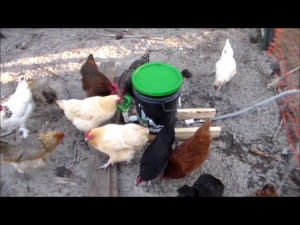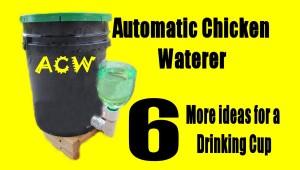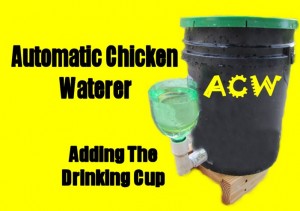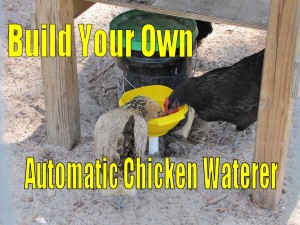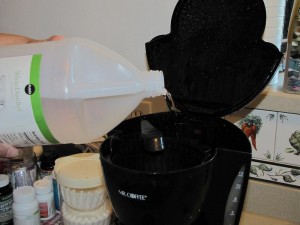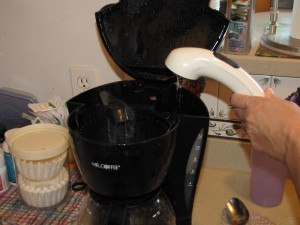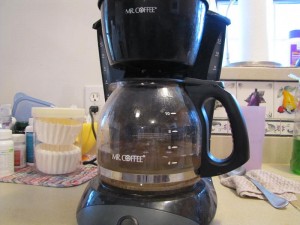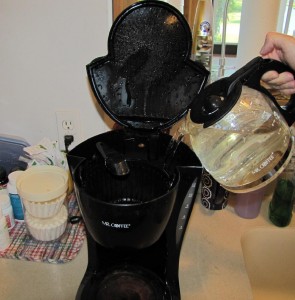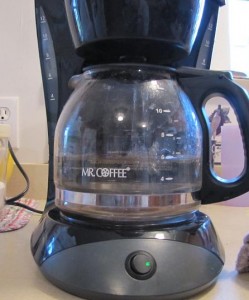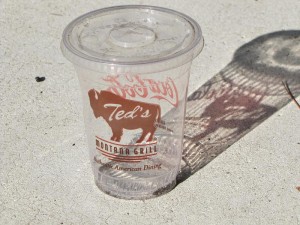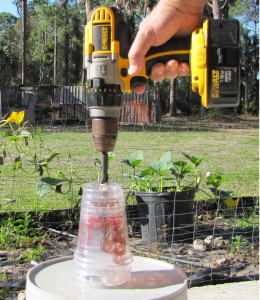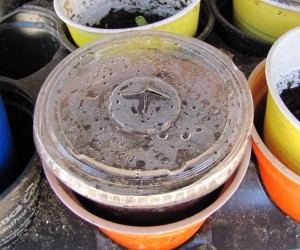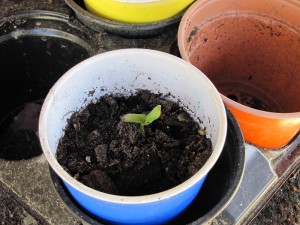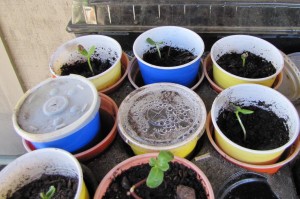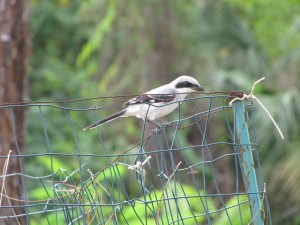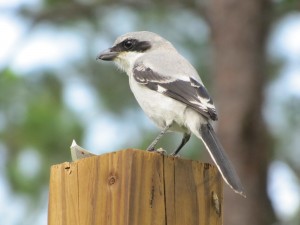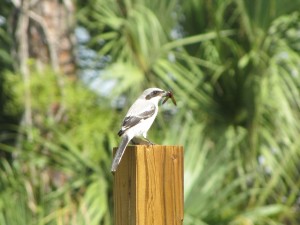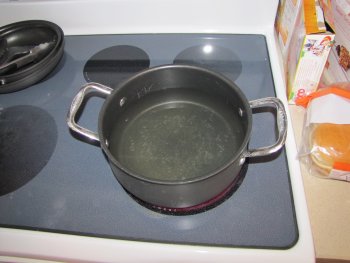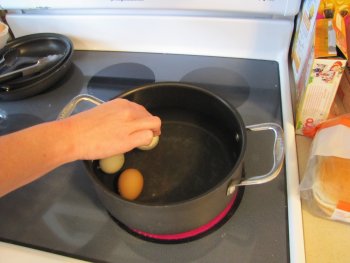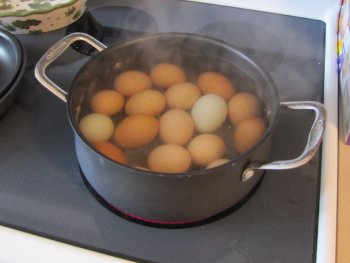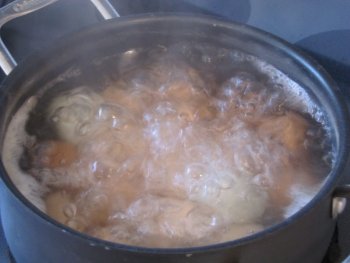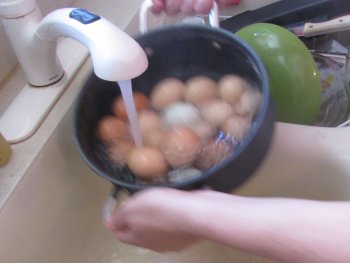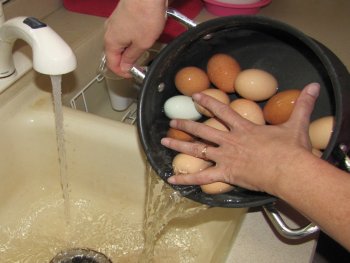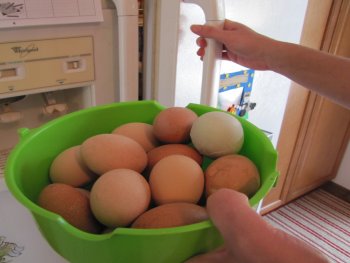The DIY Chicken Waterer is an automatic waterer designed to keep your chickens watered constantly. Trying to keep your chickens with clean water constantly is a hard chore to keep up with.
It is much easier to spend some time and build this DIY Automatic Chicken Waterer. It is not hard and I can supply all the parts if needed. Just send a message through Google Plus or Facebook.
DIY Chicken Waterer 2 years ago
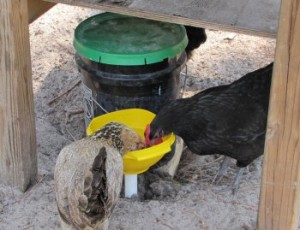 This diy chicken waterer has a traditional bowl for the drinking cup. This means that there is another through fitting to keep sealed. It can be done without too much trouble, but is somewhat cumbersome to remove and replace. You can learn more about this concept at the Automatic Chicken Waterer page. There you can see the older posts that explain this particular diy chicken waterer design.
This diy chicken waterer has a traditional bowl for the drinking cup. This means that there is another through fitting to keep sealed. It can be done without too much trouble, but is somewhat cumbersome to remove and replace. You can learn more about this concept at the Automatic Chicken Waterer page. There you can see the older posts that explain this particular diy chicken waterer design.
DIY Chicken Waterer – Most Recent Design
Recently I developed a design for another diy chicken waterer that utilized a 2 liter bottle as the drinking cup. (The image at the top) This idea is great and has been tested even with chickens. Now the drinking cup can be removed and replaced a little easier. The drinking cup can be obtained easier also. It does not need to be a certain height, because you can cut it at the height you need to.
Your specific situation will determine the ultimate finished design of the diy chicken waterer. You can set it up many different ways to suit your needs. These different methods of water delivery were highlighted in the post http://www.tagnaples.com/automatic-chicken-waterer-drinking-cup/. This post focuses on the drinking cup of the diy chicken waterer and the other post focuses on the reservoir – http://www.tagnaples.com/automatic-chicken-waterer-building-it/. All the parts can be obtained relatively easy from any hardware store or home store. The other good thing about the diy chicken waterer is the fact that it can be customized to water many different other birds or animals by changing the design of the drinking cup.

